Liquified Petroleum Gas | What is LPG – LPG Gas – LP Gas – Liquid Petroleum Gas
What is LPG – LPG gas? Liquified Petroleum Gas (LP gas or LPG) describes flammable hydrocarbon gases including propane, butane and mixtures of these gases.
Stored as LPG in gas bottles and liquefied through pressurization, it comes from natural gas processing, where it is LPG in gas, and oil refining. It is used as LPG in gas heating, cooking and auto fuel, as well as many other applications.
Liquified Petroleum Gas (LP gas or LPG) is also used indoors in homes and outdoors as LPG in gas BBQs, camp stoves and many other applications.
There are a number of LPG (LP gas) fuel gases that fall under the LPG – LPG gas – product label, including propane, butane (n-butane) and isobutane (i-butane), as well as mixtures of these gases.
These gases are also referred to as natural gas liquids or NGLs.
Liquid petroleum gas (LP gas) is colourless and odourless until an odorant is added for safety reasons.
When compressed, LPG in gas bottles takes liquid form, and when burnt as LPG gas it has a high energy content.
Liquified Petroleum Gas (LP gas or LPG) can be conveniently stored and transported and is an excellent fuel as LPG in gas heating, cooking, and many other applications.
Is Liquified Petroleum Gas Propane (LPG – LPG Gas)?
Propane is always liquified petroleum gas but liquid petroleum gas (LP Gas) is not always the same as propane, depending on where you ask the question.
Liquified Petroleum Gas (LP gas or LPG) is the same as propane in both Australia and the USA.
In other countries, the gases supplied can be propane, butane or propane-butane blends, whilst in Australia, it is just propane.
To explain simply, propane is LPG but not all LPG is propane.

What is LPG? What is Liquified Petroleum Gas – LPG? Define LPG
Liquified Petroleum Gas (LP gas or LPG) constituents include either propane, butane or a mixture of the two, as LP gas is a hydrocarbon fuel gas.
LPG – LPG gas – consists of flammable hydrocarbons containing either three or four carbon atoms combined with hydrogen atoms.
The typical constituents of LP gas are propane (C3H8) and/or butane (C4H10). Isobutane may also be present.
Liquified Petroleum Gas (LP gas or LPG) is stored as LPG in gas storage tanks and delivered as LPG in gas bottles or tanker truck.
Liquid petroleum gas (LPG – LP gas) combusts easily in air and has a higher energy content than natural gas (methane).
LPG – LPG gas (LP gas) is liquified petroleum gas and the most common terminology used in Australia.
Note that “liquified petroleum gas” can also be called “liquid petroleum gas”.
LPG Fuel: LPG – LPG Gas Constituents
LPG fuel is not just a single gas.
Liquified Petroleum Gas (LP gas or LPG) or liquid petroleum gas constituents include propane, butane, and isobutane, all flammable hydrocarbon gases used as fuel LPG in gas heating cooking and vehicular fuel.
Propane and butane are made up of multiple carbon and hydrogen atoms whilst natural gas is made up of lighter methane, the simplest carbon and hydrogen molecule.
 LP gas (Liquified Petroleum Gas) is typically used for gas fuel as LPG in gas heating, cooking, hot water and various commercial applications.
LP gas (Liquified Petroleum Gas) is typically used for gas fuel as LPG in gas heating, cooking, hot water and various commercial applications.
There are a number of gases that fall under the LP gas category.
The most common of these include propane, butane (n-butane) and isobutane (i-butane), as well as mixtures of these LPG gases.
Other LPG gases that also fall under the “LPG” label, including ethane, ethylene, propylene, butylene and isobutylene, as well as mixtures of these gases.
In Australia, liquid petroleum gas (LPG – LP gas) is propane.
In the USA, LPG is also propane and they just call it “propane”.
In New Zealand, liquid petroleum gas (LPG – LP gas) is a mixture of propane and butane.
In the UK, consumers have choices. LPG (LP gas) is referred to as either propane, butane or a blend, depending on what gas is present in the customer’s choice.
LPG Meaning – Define LPG – LP Gas
To define LPG (LPG meaning), it is liquified petroleum gas (LP gas), a flammable compressed hydrocarbon fuel gas consisting of propane, butane and isobutane gases.
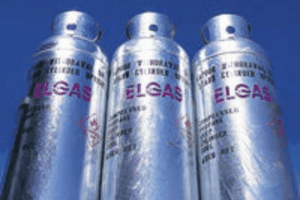 Liquified Petroleum Gas (LP gas or LPG) is typically stored and shipped as LPG in gas bottles or LPG in gas tanks.
Liquified Petroleum Gas (LP gas or LPG) is typically stored and shipped as LPG in gas bottles or LPG in gas tanks.
The literal meaning of LPG as an acronym is liquid petroleum gas or liquified petroleum gas.
Other names include bottled gas, LP gas, LPG gas, Autogas (when used as vehicle fuel), BBQ gas or camping gas.
The definition of LP gas includes a number of fuel gases that fall under the LPG category label, including propane, butane (n-butane) and isobutane (i-butane), as well as mixtures of these gases and are also referred to as natural gas liquids – NGL.
Liquified Petroleum Gas – LPG – LPG Gas in Summary:
1. LPG (LP Gas) is the acronym for Liquified Petroleum Gas or Liquid Petroleum Gas.
2. It is made up of a group of flammable hydrocarbon gases that are liquefied through pressurisation and commonly used as LPG fuel.
3. It is LPG in gas, as it comes from natural gas processing and petroleum refining.
4. The LPG gases can all be compressed into liquid at relatively low pressures.
5. Liquid petroleum gas (LPG – LP gas) is frequently used as fuel for LPG in gas heating, cooking, hot water and vehicles, as well as for refrigerants, aerosol propellants and petrochemical feedstock.
6. Liquified Petroleum Gas (LP gas or LPG) is generally stored, as a liquid, in steel vessels ranging from BBQ gas bottles to larger gas cylinders and LPG in gas storage tanks.
7. LPG – LPG gas is mixture of flammable hydrocarbon gases that include propane, butane, isobutane and mixtures of the three gases.
The following short video (8:29) explains all of the Liquified Petroleum Gas (LP gas or LPG) basics…
LPG – LPG Gas Attributes Table
| LPG Attributes | Propane | Butane |
| Chemical Formula | C3H8 | C4H10 |
| Energy Content: MJ/m3 | 95.8 | 111.4 |
| Energy Content: MJ/kg | 49.58 | 47.39 |
| Energy Content: MJ/L | 25.3 | 27.5 |
| Boiling Temp: Cº | -42 | -0.4 |
| Pressure @ 21ºC: kPa | 858.7 | 215.1 |
| Flame Temp: Cº | 1967 | 1970 |
| Expansion: m3/L | 0.270 | 0.235 |
| Gas Volume: m3/kg | 0.540 | 0.405 |
| Relative Density: H2O | 0.51 | 0.58 |
| Relative Density: air | 1.53 | 2.00 |
| L per kg | 1.96 | 1.724 |
| kg per L | 0.51 | 0.58 |
| Specific Gravity @ 25ºC | 1.55 | 2.07 |
| Density @ 15ºC: kg/m3 | 1.899 | 2.544 |
Note: Some LPG (LP gas) numbers have been rounded.
LPG – LPG Gas – LP Gas – LPG Gas Terminology
LPG, LPG Gas and LP Gas all have the same meaning and describe one in the same product.
LPG Gas is the RAS syndrome equivalent, where RAS stands for redundant acronym syndrome, as the ‘G’ in LPG already stands for ‘Gas’.
LPG and LP Gas just remove the redundancy.
Terminology for Liquified Petroleum Gas – LPG Can Depend on the Country – GPL Gas – GLP Gas
Propane is an LPG gas but not all LPG gas is propane.
LPG (LP gas) is probably the most common term used worldwide.
In Australia, it is frequently called “LPG gas”.
In the USA it is just called Propane.
In the UK, it is referred to as either propane, butane or LPG, depending on what you choose.
In other countries, they call it “GPL” or “GLP” instead of “LPG”, as the acronyms are based on different languages and different language syntax.
For example, in French it is “gaz de pétrole liquéfié” or in Spanish it is “gas licuado de petróleo”.
How is Liquified Petroleum Gas Made – LPG in Gas
Liquified Petroleum Gas (LP gas or LPG) is made during natural gas processing and crude oil refining.
Liquid petroleum gas (LPG – LP gas) is separated from unprocessed natural gas using refrigeration, where it is LPG in gas.
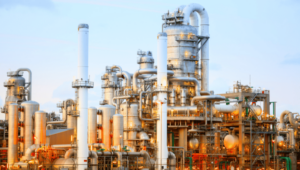
Liquified Petroleum Gas (LP gas or LPG) is extracted from heated crude oil using a distillation tower.
LPG (LP gas) can be used as is or further separated into its three primary parts: propane, butane and isobutane and stored as LPG in gas bottles or LPG in gas tanks.
The starting liquid petroleum gas (LPG – LP gas) origin is both natural gas wells and oil wells.
Liquified Petroleum Gas (LP gas or LPG) is stored pressurised, as a liquid LPG in gas cylinders or tanks.
Liquified Petroleum Gas Storage: LPG in Gas Bottles – Bottled LPG Gas
Liquified Petroleum Gas (LP gas or LPG) is stored in pressure vessels as LPG in gas bottles or LPG in gas tanks.
 It is also called bottled LPG gas because it is stored in steel vessels ranging from small BBQ gas bottles to larger gas bottles and tanks.
It is also called bottled LPG gas because it is stored in steel vessels ranging from small BBQ gas bottles to larger gas bottles and tanks.
As such, Liquified Petroleum Gas (LP gas or LPG) is almost always stored as in its liquid form.
These can range from small gas cannisters to LPG in gas bottles for BBQ to larger gas cylinders and much larger tanks or bullets.
Liquid petroleum gas (LPG – LP gas) storage depots may consist of very large storage as liquid LPG in gas spheres, known as Horton Spheres (see accompanying image).
Liquified Petroleum Gas (LP gas or LPG) can also be stored as liquid LPG in gas underground facilities which are specially built or prepared caverns.
Get $100 in LPG Account Credits!
Choice of 2-Year Fixed or Variable 45kg Gas Bottle Price
No Lock-in Contracts
We return your old gas bottles for you
It is a great time to switch to ELGAS
LPG in Gas – Where LPG Comes From – Origin of LPG – LPG Gas
LPG in gas is a good description of it, being a constituent of natural gas.
LPG (LP gas) is stripped from in raw natural gas, during natural gas processing, using refrigeration.
Liquified Petroleum Gas (LP gas or LPG) is also sourced from crude oil refining using a distillation tower.
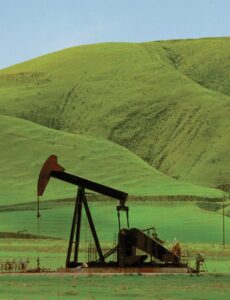 The initial origin of LPG is from drilling oil and gas wells, where it is LPG in gas before processing.
The initial origin of LPG is from drilling oil and gas wells, where it is LPG in gas before processing.
Liquid petroleum gas (LPG – LP gas) products are found naturally in combination with other hydrocarbon fuels, typically crude oil and natural gas.
LPG (LP gas) is produced into its final form during natural gas processing and crude oil refining.
It is then stored as LPG in gas bottles or gas cylinders.
Liquified Petroleum Gas (LP gas or LPG) is a fossil fuel that does not occur in isolation.
LPG (LP gas) is isolated, liquefied through pressurisation and stored in pressure vessels.
Refining LPG – LP Gas from Crude Oil and Raw Natural Gas
LPG – LP gas does not occur naturally separate from other hydrocarbons.
Liquified Petroleum Gas (LP gas or LPG) processing involves separation and collection of the gas from its natural gas and crude oil base.
LPG (LP gas) is isolated from the hydrocarbon mixtures by separation from the natural gas or by refining of the crude oil.
Both liquid petroleum gas (LPG – LP gas) processes begin by drilling oil wells.
The gas/oil mixture is piped out of the well and into a gas trap, which separates the stream into crude oil and “wet” gas, which contains LPG (LP gas) and natural gas.
The heavier crude oil sinks to the bottom of the trap and is then pumped into an oil storage tank for refining.
 Crude oil undergoes a variety of refining processes, including the use of distillation towers (see image), catalytic cracking, crude distillation, and others.
Crude oil undergoes a variety of refining processes, including the use of distillation towers (see image), catalytic cracking, crude distillation, and others.
The “wet” gas, off the top of the gas trap, is processed to separate the gasoline (petrol) from the natural gas and LPG (LP gas).
The natural gas, which is mostly methane, is piped to towns and cities for distribution by gas utility companies.
The petrol is shipped to service stations.
The Liquified Petroleum Gas (LP gas or LPG) is stored, under pressure, as LPG in gas cylinders and storage tanks.
The LPG fuel also enters the distribution network, where it eventually finds its way to end users, including home and commercial LPG (LPG gas) users all around Australia and the world.
At the point of use liquid petroleum gas (LPG – LP gas) once again becomes a gas.
Propane and Butane are Natural Gas Liquids – NGLs
The typical Liquified Petroleum Gas (LP gas or LPG) constituent gases – propane and butane – are regarded as Natural Gas Liquids – NGLs.
However, not all NGLs are liquid petroleum gas (LPG – LP gas).
Natural gas liquids, also called Condensate, include other hydrocarbons, too.
Interestingly, LNG – liquefied natural gas – is NOT a natural gas liquid.
What are Natural Gas Liquids – NGLs?
Raw natural gas, as it comes out of the ground, contains a number of gases and compounds, as well as impurities.
 However, it is predominantly methane (CH4) gas, which is more commonly known as natural gas.
However, it is predominantly methane (CH4) gas, which is more commonly known as natural gas.
The raw natural gas must be processed to obtain pipeline quality clean, dry natural gas (methane), including the removal of impurities.
NGLs – Natural Gas Liquids – or condensate are the heavier hydrocarbons that remain after the methane (dry natural gas) and impurities are removed.
NGLs include isobutane, ethane, ethene, propene, isobutene, butadiene, pentane, pentene and pentanes plus, as well as propane and butane.
Natural gas liquids (NGL) range from 1% to 10% of the raw natural gas flow.
LPG in Gas Applications
Liquified Petroleum Gas (LP gas or LPG) is used in your home, including LPG in gas cooking, heating, hot water, Autogas, aerosol propellant, air conditioning refrigerant and back-up generator applications.
When used in your home, liquid petroleum gas (LPG – LP gas) is typically supplied in 45kg LPG gas bottles.
LPG – Liquid Petroleum Gas – has hundreds, if not thousands, of uses including LPG in gas hot air balloons
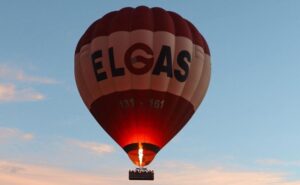
LPG (LP gas) is used in leisure time activities including caravans, boats, recreational vehicles and camping.
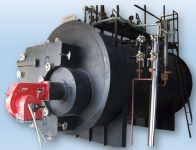 Business and industry use LPG – LPG gas – for a multitude of processes including LPG in gas steam boilers, kilns, ovens and LPG in gas forklifts. (image is gas fired boiler)
Business and industry use LPG – LPG gas – for a multitude of processes including LPG in gas steam boilers, kilns, ovens and LPG in gas forklifts. (image is gas fired boiler)
Liquified Petroleum Gas (LP gas or LPG) is also employed as gas propellants, refrigerants, vehicle fuel and petrochemical feedstock.
Crop and produce drying, heating greenhouses, hot water for dairies, irrigation pumps and LPG in gas heating animal enclosures are just some of the agricultural applications.
LPG fuel for transport is also a big user as Autogas.
Autogas can be either propane or propane mixed with butane to fuel various vehicle types.
There are also many, many more applications, including LPG in gas power generation and the hospitality industry.
Transporting LPG – LPG Gas
Liquified Petroleum Gas (LP gas or LPG) is a versatile, transportable, low carbon fuel.
Using it requires very little infrastructure, which makes it an excellent choice for developing countries, as well as developed countries.
Liquified Petroleum Gas (LP gas or LPG) is easy to transport, as LPG in gas cylinders or LPG in gas tankers, making it available virtually everywhere.
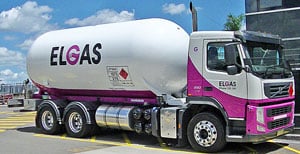
LPG – LPG gas – delivery methods can range from very sophisticated to extremely basic.

From requiring considerable capital investment to virtually no investment at all.
Regardless of how it’s delivered, liquified petroleum gas – LPG (LP gas) is there when people need it.
Clean, safe and reliable energy for everyone everywhere.
LPG Liquid to Gas – Vaporisation
The process of turning LPG liquid to gas is called vaporisation.
Every time you turn on one of your gas appliances, the LPG in gas bottles starts to boil, turning to gas.
This is liquid propane changing to gas vapour.

If you could see though the steel, you would also notice that LPG in gas bottles looks just like water boiling.
The big difference is that it happens at -42°C or -44°F.
Liquid changing to gas vapour is called vaporisation.
To boil, the liquid propane draws heat from the steel walls of the gas bottle which, in turn, get heat from the ambient air.
The liquid boils and turns back into gas vapour when you release some of the pressure of the LPG in gas bottles, by turning on your gas appliance.
As with water, the more heat that is applied, the more rapidly liquid petroleum gas (LPG – LP gas) boils, vaporising at a faster rate.
The vapour pressure of the LPG in gas bottles also increases with temperature.
Given that the steel of the bottle draws heat from the ambient air heat, cold weather will slow down the rate of vaporisation of LPG in gas bottles that are cooled by the weather.
Vaporisation also makes the LPG in gas bottles feel colder than the ambient temperature.
The LPG in gas bottles gets even colder when you are actually using the gas.
The gas vapour is held in the top of the bottle and the liquid propane at the bottom, as shown in the image above.
Almost all of the Liquified Petroleum Gas (LP gas or LPG) uses involve the use of the gas vapour, not the liquified gas
Chemical Formulas
There are a number of liquid petroleum gas (LPG – LP gas) chemical formulas (formulae).
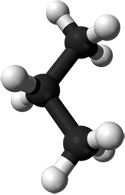 Propane chemical formula is C3H8. (Propane molecule shown in image)
Propane chemical formula is C3H8. (Propane molecule shown in image)
Butane and Isobutane both have the same chemical formula, C4H10, as isobutane is an isomer of butane.
Starting with the lowest carbon NGL chemical formula, the Ethane chemical formula is C2H6.
The highest carbon gas is Pentane (n-pentane), with a chemical formula of C5H12, but it is only a gas over 36.1°C.
Heavier hydrocarbons (pentanes plus) are liquids or waxy solids.
LP Gas Pressure Varies with Temperature
As previously mentioned, when stored as LPG in gas bottles, it is under pressure.
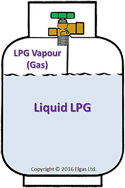 The term “pressure” refers to the average force per unit of area that the gas exerts on the inside walls of the gas bottle.
The term “pressure” refers to the average force per unit of area that the gas exerts on the inside walls of the gas bottle.
Liquified Petroleum Gas (LP gas or LPG) pressure is measured in kilopascals (kPa) or pounds per square inch (psi).
The gas pressure of LPG in gas bottles can vary greatly based on temperature.
The level of fill of LPG in gas bottles comes into play when the gas is being used, as it affects the rate of vapourisation.
The greater the fill, the faster the vaporisation, as more liquid gas is touching the gas bottle walls.
As it is a liquified gas, the pressure of LPG in gas cylinders will remain the same from full until the last of the liquid propane is vapourised.
Then the pressure of LPG in gas bottles will fall quickly as the last of the gas vapour is used, as well.
Under How Much Pressure is the LPG in Gas Cylinders?
The pressure of the LPG in gas bottles is dependent upon the temperature of the vessel.
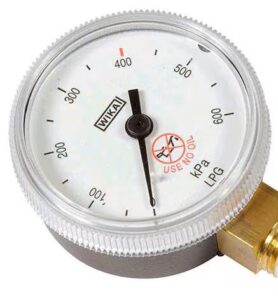 The higher the temperature, the higher the pressure of the LPG in gas cylinders.
The higher the temperature, the higher the pressure of the LPG in gas cylinders.
The pressure range for liquid petroleum gas (LPG – LP gas) is from 152 kPa (24 PSIG) at 0ºC to 1794 kPa (257 PSIG) at 54ºC.
The propane exists as both liquid and vapour (gas) within the cylinder.
The term “pressure” refers to the average force per unit of area that the gas exerts on the inside walls of the LPG in gas cylinders.
Liquified Petroleum Gas (LP gas or LPG) pressure drops to zero at -43ºC (which is just below the boiling point for propane) and the pressure of LPG in gas bottles becomes greater at even higher temperatures.
LPG (LP Gas) is Heavier Than Air
 In answer to the frequently asked question “Is LPG heavier than air”, the answer is “YES”.
In answer to the frequently asked question “Is LPG heavier than air”, the answer is “YES”.
For example, if the density of air is equal to 1.00, the density of propane is 1.53.
Butane is even heavier, at 2.00. Isobutane is heavier still, at 2.07.
On the other hand, natural gas – methane – is lighter than air, at about 60% of the density of air.
Eco-Friendly Clean Burning
As LPG in gas heating, liquid petroleum gas (LPG – LP gas) is an eco-friendly choice, as it is a low carbon, low Sulphur fuel.
Liquified Petroleum Gas (LP gas or LPG) – use results in lower CO2 emissions than other energy sources, such as coal fired electricity.
For example, with coal fired electricity, replacing your electric hot water system with an LPG (LP gas) 6-Star continuous flow hot water system may reduce the greenhouse gas emissions produced from your hot water use by about 75%.
Liquified Petroleum Gas (LP gas or LPG) also can help lower greenhouse emissions during the transition to renewable energy sources.
Make the Switch to ELGAS

If you are looking for an Australian alternative to electricity, ELGAS LPG – LPG gas could be the perfect energy source for you.
Contact ELGAS to get LPG for home and or business.
Our Liquified Petroleum Gas (LP gas or LPG) experts are on hand to answer any questions you have and will help you sort out the most cost-effective and energy-efficient LPG (LP gas) solution for your home or business.
- Elgas to the Rescue with Helicopter LPG Delivery - November 14, 2024
- Gas Patio Heater Guide: Outdoor Gas Heaters – Outdoor Mushroom Heater - September 22, 2024
- LPG Meaning – LPG Means: What Does LPG Stand For - August 31, 2024
